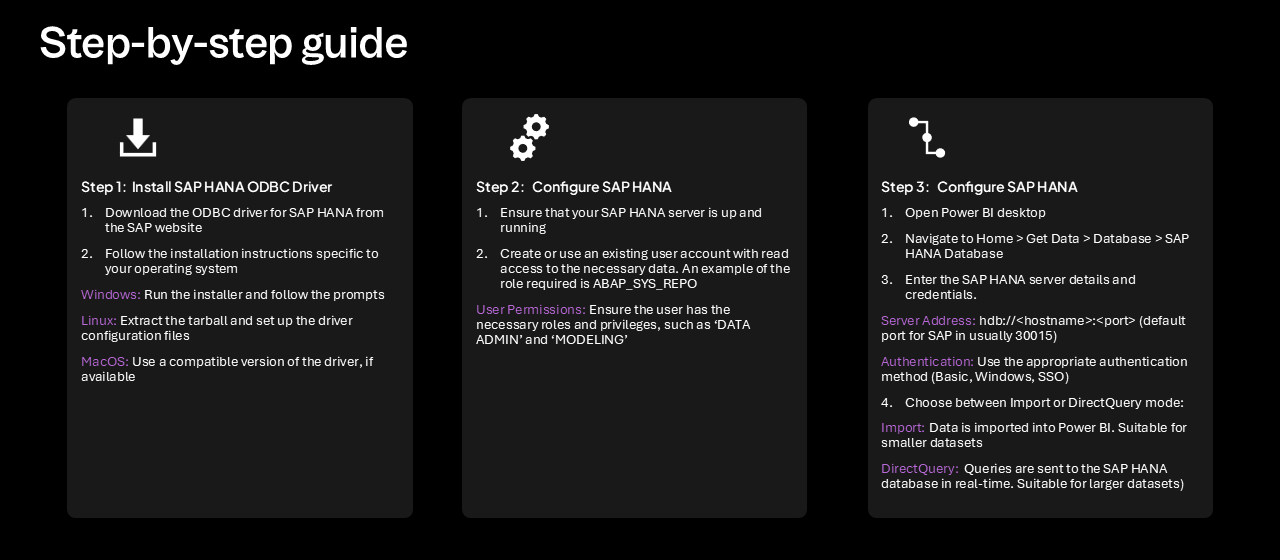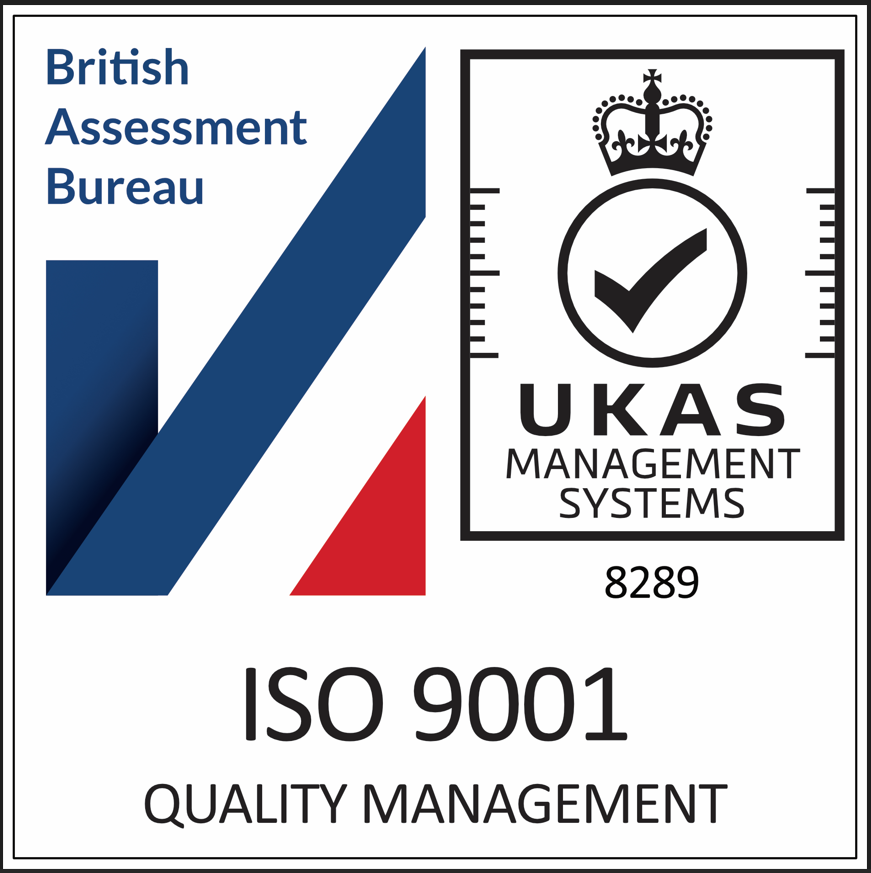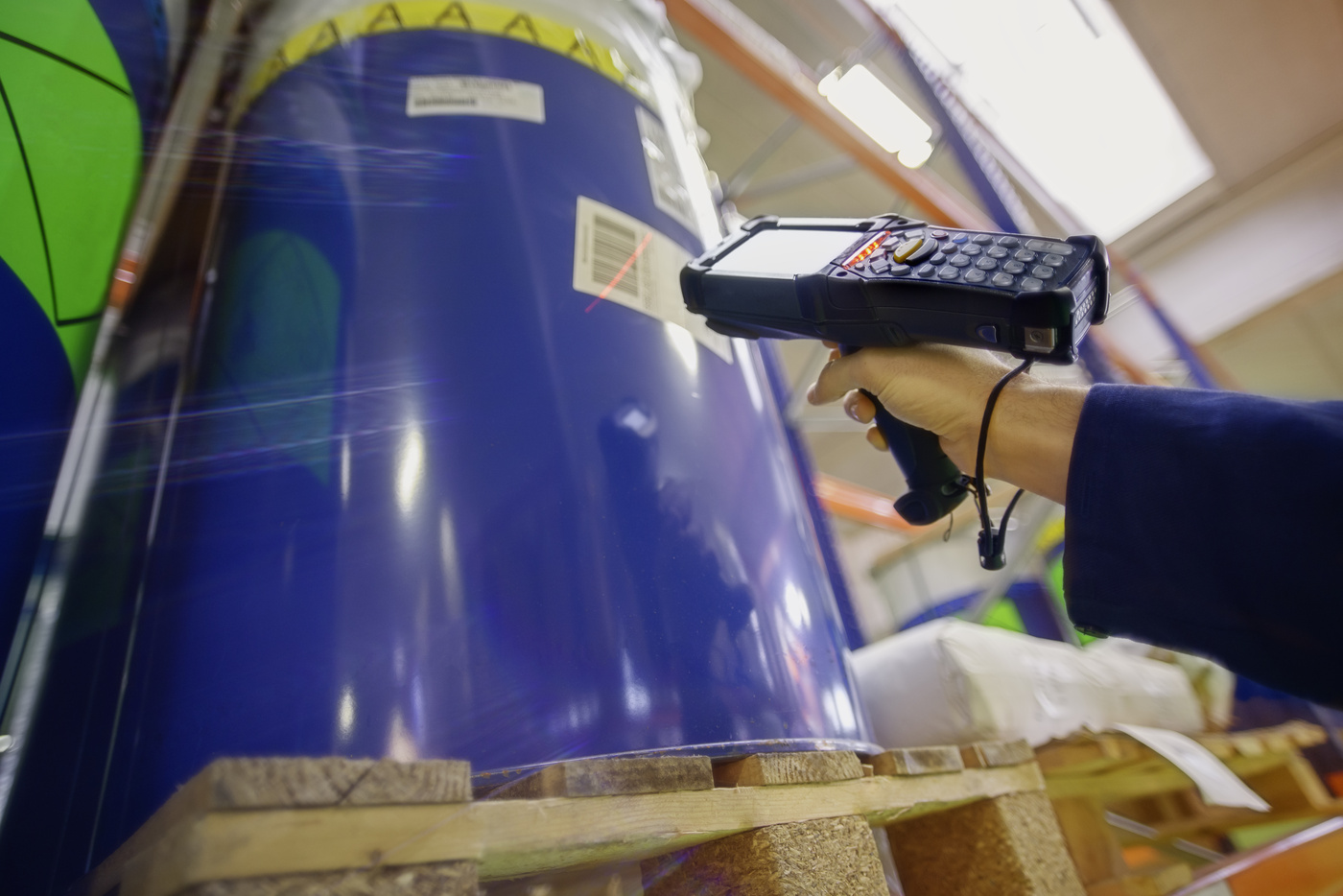Integrating SAP HANA with Power BI allows organisations to leverage SAP HANA’s robust data processing capabilities while taking advantage of Power BI’s user-friendly and advanced analytics features. This integration enables users to analyse and visualise their data seamlessly without requiring additional skills in ABAP or other data extraction tools.
SAP HANA is an in-memory, column-oriented, relational database management system developed by SAP. It offers high-speed data processing capabilities and real-time analytics, making it a powerful tool for managing large volumes of data efficiently.
Power BI is a cloud-based business analytics service from Microsoft that provides interactive visualisations and business intelligence capabilities. It features an intuitive interface, enabling end users to create their own reports and dashboards without needing extensive technical knowledge.Typically, the tax department carries out the following functions:
Previously, generating reports from SAP ECC involved extracting data either through SAP BW (Business Warehouse) or by creating ABAP reports. This extracted data would then be imported into Power BI for report creation. Alternatively, organisations could purchase and use SAP’s own BI tools, though these can be costly and integrating non-SAP data could be challenging.
With the shift to SAP HANA and the continuous development of Power BI, organisations now have a more efficient option for reporting. SAP HANA, combined with Power BI, eliminates the need for additional data extraction and can allow Power BI developers to access data directly. This is particularly beneficial for organisations already using Power BI, as they can leverage their existing skills to create comprehensive organisational reports more efficiently.
This article outlines the process of how these reports can be created by integrating SAP HANA with Power BI using the Power BI HANA connector. It offers technical and strategic insights for organisations looking to leverage their SAP HANA data within Power BI, enhancing their reporting capabilities to make informed business decisions.
The aim is to provide a comprehensive guide to connecting SAP HANA to Power BI. It will outline the benefits of integrating SAP HANA with Power BI and offer best practices for creating efficient and insightful reports. Additionally, it will present real use cases that demonstrate the advantages of using these two powerful tools together.
SAP HANA is engineered to manage high transaction rates and complex query processing on a single platform, making it ideal for real-time data analytics, predictive analytics, and big data applications. Key technical features include:
Power BI is a comprehensive suite of business analytics tools designed to deliver insights across your organisation. It connects to hundreds of data sources, simplifies data preparation, and facilitates ad hoc analysis. Power BI gives the ability for companies to visualise their data in various different formats, consolidated in one place, with the ability to update in real-time, and accessible on all devices. Key technical features include:
The Power BI HANA connector enables direct connection between Power BI and SAP HANA databases, allowing users to create reports and dashboards based on HANA data. It supports both DirectQuery and Import modes, offering flexibility in data retrieval methods to suit various analytical needs.
DirectQuery Mode: Data remains in the SAP HANA database, and queries are executed in real-time. This mode is suitable for large datasets and ensures that the most up-to-date data is always used.
Import Mode: Data is imported into Power BI and stored in the Power BI data model. This mode is suitable for smaller datasets and allows for faster report rendering and interactivity.
SAP HANA System: Ensure you have access to your SAP HANA system and appropriate user credentials.
Power BI Desktop: Download and install Power BI Desktop from the official website. This Application can be downloaded from the following location Power BI Desktop. Power BI Desktop is updated on a regular basis, so the best place to install this from is the Microsoft Play Store as this ensures the Updates to the tool are done automatically.
ODBC Drivers: Install the necessary ODBC drivers for SAP HANA. The connector is available from the following location: SAP Connector






